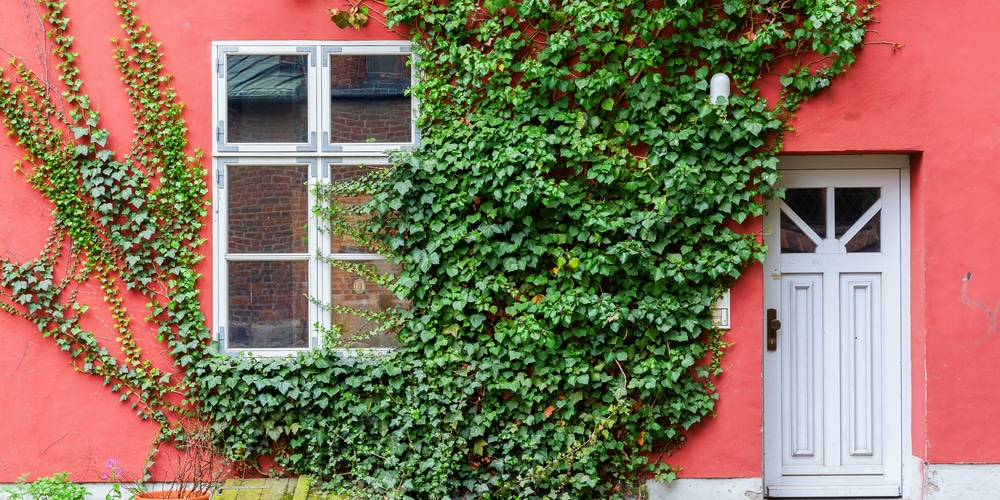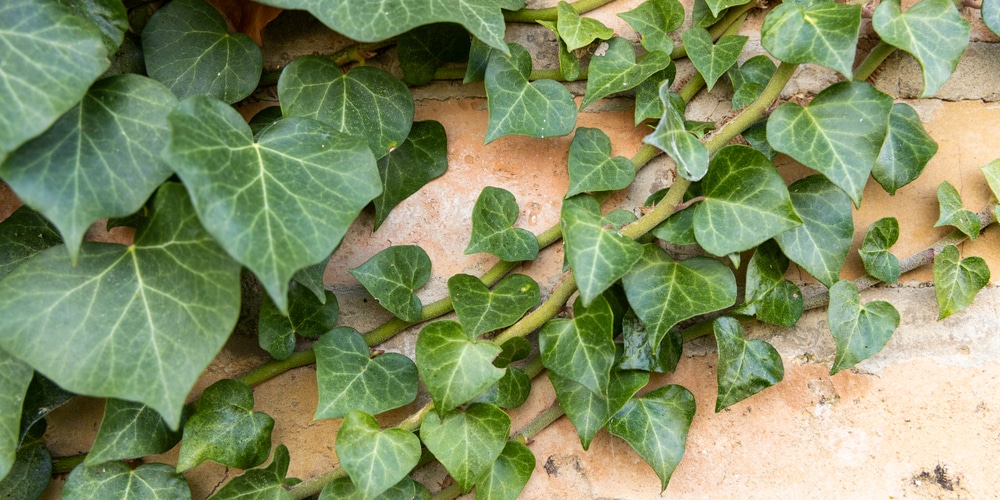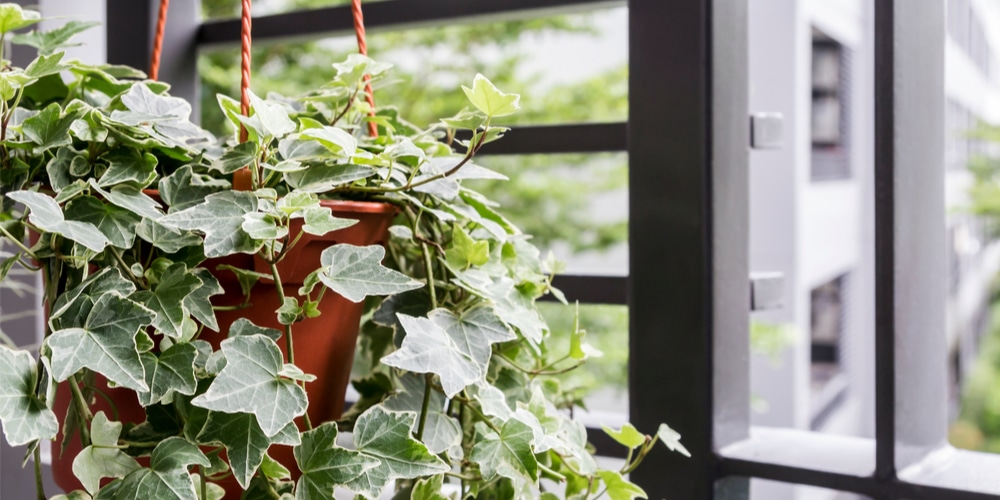If you’re looking for a low-maintenance plant to care for, look no further than Hedera Hibernica! Commonly known by many names such as Bonton ivy, Irish ivy, and Atlantic ivy are native to the Atlantic coast of Europe.
This easy-to-grow evergreen thrives in a variety of environments and is perfect for both indoor and outdoor use.

| Botanical Name | Hedera hibernica |
| Common Name | Atlantic ivy, Boston Ivy, Irish ivy |
| Plant Type | Perennial evergreen |
| Flower Color |
light-green clusters with berry-like fruit on top of each stem |
| Size When Mature | 787.402 inches high |
| Bloom Time | Early Spring |
| Sun Requirements | Direct sun to partial shade |
| USDA Hardiness Zones | Zones: 4-9 |
| Soil PH Range | 5.0 – 7.5 |
| Soil Type | Well-draining potting mix |
| Water Needs | Medium |
| Native Area | Atlantic coast of Europe |
What You Need to Know About Hedera Hibernica
Hedera Hibernica, more commonly known as Irish ivy, is a fast-growing climbing plant that is often used as a decorative element in gardens and homes.
An evergreen shrub in the Araliaceae family, genus Hedera. Its ability to cling to any surface with its crampons and adapt to almost every condition, especially shade, makes it an ideal climber.
It is normally seen to climb surfaces such as walls, cliffs, and trees. The Hedera Hibernica can climb these high surfaces by using its aerial rootlets which are small roots that help the plant to attach itself to surfaces.
However, the H. hibernica can also be an invasive plant if not kept in check regularly. In fact, it is known to be a nuisance if left alone to grow in borders and garden fences. It can also affect and hinder the flow of water in gutters and
One thing to keep in mind about Hedera Hibernica is that it is poisonous to humans and animals if ingested. The leaves of the ivy plant contain saponins which can cause stomach upset, vomiting, and diarrhea. If you have small children or pets, it is best to keep this plant out of reach.
How to Care for Hedera Hibernica
Now that we’ve gone over some basic information about Hedera Hibernica, let’s get into the nitty-gritty of how to care for this plant.
Here’s everything you need to know about growing and caring for a thriving Hedera Hibernica.
Light
Ivy thrives in both bright and low light conditions, making it a perfect plant for both indoor and outdoor use.
If you are living in an area where there is too much heat from the sun, it is best to plant H. Hibernica near a window where it will receive indirect sunlight.
Too much direct sunlight can scorch the leaves of the plant and cause discoloration. If you are growing your ivy plants outdoors, they will do best in an area that receives partial sun to partial shade.
Water and Soil Needs
The H. hibernica prefers well-drained, loamy soil with a pH between 5.0 and 7.5 but will survive in a variety of soils.
This plant is drought-tolerant and can go several weeks without being watered. However, during prolonged periods of drought, the leaves of the ivy may start to turn brown and drop off.
Keep the soil moist but not soggy and be sure to allow the topsoil to dry out between watering. During the winter months, you can reduce watering to once every two weeks.
Temperature Requirements
Hedera hibernica withers if it isn’t directly exposed to sunshine or if the temperature drops below 50°F. Moving the pot indoors during the winter months is a good way to protect your plant.
With stunning blooms that grace gardens in USDA Hardiness Zones 4 through 9, Hedera Hibernica is a versatile plant that can add interest to any outdoor space.
Fertilizer
The best fertilizer to use on a Hedera Hibernica is a slow-release fertilizer that is high in nitrogen.
This type of fertilizer will help to promote growth and keep the leaves of the plant looking green and healthy. You can apply fertilizer to your ivy plants every two to three months, or as needed. When it reaches full maturity, there is little to no need for fertilizing.
Common Diseases
The Hedera hibernica is susceptible to mealybugs, spider mites, and aphids. These pests can be controlled with insecticidal soap or neem oil. Additionally, it is also susceptible to fungal diseases such as root rot and leaf spot. These diseases can be controlled with a fungicide.
Pruning is not necessary but can be done if desired. To prune, cut back the stems to the desired length.
Hedera Hibernica Propagation
To propagate by the stem, cut a stem that is at least 6 inches long and has several leaves. Place the stem in a pot of moist soil and cover with plastic wrap.
Keep the soil moist and the temperature warm until new growth appears. To propagate by seed, sow the seeds in a pot of moist soil and cover with plastic wrap. Keep the soil moist and the temperature warm until new growth appears.
Moreover, this plant is susceptible to mealybugs, spider mites, and aphids. These pests can be controlled with insecticidal soap or neem oil. The H. hibernica is also susceptible to fungal diseases such as root rot and leaf spot. These diseases can be controlled with a fungicide.
Pruning is not necessary but can be done if desired. To prune, cut back the stems to the desired length.
Related Article: 10 Beautiful Vines That Grow on Trees

